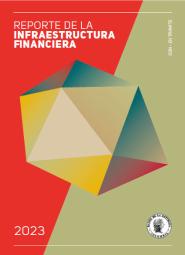Learn about the Labor Market Reports as of May 2022
As of May 2022, household surveys and administrative records show a dynamic labor market in which employment continues to grow rapidly. Overall, employment levels are similar to or higher than those recorded before the Covid-19 Pandemic. Employment is growing faster in the cities, and the salaried and formal employment segments stand out. The sectors with the most significant contribution to employment growth are commerce, lodging, transportation, and recreation. The population groups that contributed most to employment growth were women, people between 29 and 65 years of age, individuals without higher education, and non-heads of a household. Vacancy rates and hiring expectations surveys reaffirm the good performance of the labor market.
The labor supply shows signs of stabilization during the last quarter. This behavior, together with the greater dynamism in employment, explains the sustained reduction in the unemployment rate (UR), especially in urban areas. Although there were increases in current income, especially in the non-salaried segment, higher inflation meant that current income remained stable in real terms. Slack indicators, bottleneck indicators, and the Beveridge curve show an increasingly tight labor market. Given the economic growth forecasts of Banco de la República’s (the Central Bank of Colombia) technical team, published in the July 2022 Monetary Policy Report, the estimations indicate that the national UR would end 2022 at 10.2%. The average UR for 2022 would be between 10.2% and 11.5%. Meanwhile, estimates of the non-inflationary unemployment rate (Nairu) suggest a more negative urban unemployment gap. These estimates suggest that the tighter labor market could generate inflationary pressures.
This report is divided into two sections. The first section delves into the labor market events described above. The second part studies the subsidies provided to households during the pandemic and their potential impact on labor participation. Subsidies were a key policy to mitigate the impact of the pandemic on the income of the most vulnerable households. The amount of the different subsidies granted by the Colombian Government grew significantly during this period, from 0.3% of GDP in 2019, to 1.3% in 2021. This was reflected in a significant increase in the number of beneficiaries and the amount received per beneficiary.
To measure the impact of these subsidies on labor participation, we follow over time socio-demographic groups defined by gender, age, level of education, and metropolitan area. Panel and fixed effects estimates indicate that there are no persistent changes in labor participation in the groups most likely to receive additional subsidies during the pandemic. A complementary exercise shows that municipalities that received more subsidies did not register significant increases in formal salaried employment. These results align with those found by other authors for the case of Colombia, such as Gallego et al. (2021) and Londoño-Vélez and Querubín (2022). It is worth noting that these results are valid for the pandemic period (2019-2021) and cannot necessarily be extrapolated to other periods with different circumstances.




















































